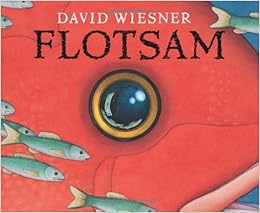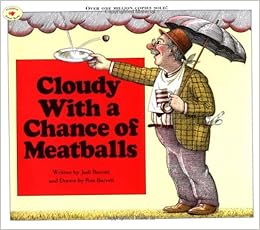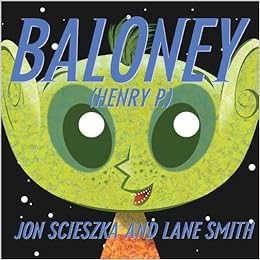It's that most dreaded time of year again: science fair. My roommate/coworker told me there were kids in this weekend asking for science fair project books. Which means that soon I'll have to deal with questions like"Where are your books about mascara?" and other such nonsense. To combat this, help parents and kids understand science fair better, as well as how to research their projects, I came up with a powerpoint presentation that I did for several years. My internet-fu is not so strong as to let me know how to put the file here for you to download, so instead I'm just putting the text up here for you. Just as good - copy and paste is a wonderful thing. Luckily, this text was all in the handy-dandy handout I made for everyone.
Picking a project:
Make sure you pick something appropriate for your age/grade. If you pick something beneath your level,
make sure you have STELLAR research to go with your project.
Let’s brainstorm:
What are some of your favorite subjects/things? How can we turn those into a science fair
project?
(Interjection not originally in the handout: Really. Do this. It's a great exercise in creativity. If you have a group of kids, or even if you're just doing this for your own kid, there has got to be a way you can tie science back to an interest of theirs, be it video games, sports, or...boogers. I don't know! Kids like gross stuff.)
Research:
This is probably the most dreaded part of science fair
projects – the research. But it doesn’t
have to be hard if you’re smart about how you do it!
Let’s use an example of testing plant food. What topics do you think you should research?
If you think you’ll be able to come to the library and find
a book about plant foods – specifically the ones you will use, you might as
well just beat your head with an encyclopedia – because it will be just as frustrating.
Think about it for a minute.
Why do you think plant food A will do better than plant food B?
The best thing to do in this situation is look at the
ingredient list of the two different plant foods. Is there an ingredient in one that isn’t in the
other?
If there is, research that ingredient and its effects on
plants. You can also research the type
of plant you will use and see in what growing conditions it does best. If your plant food is highly acidic/alkaline,
you might research that and see if that might affect your plants.
Hypothesis:
Once you have chosen the experiment you want to perform, you
have to come up with a hypothesis.
A
hypothesis is a statement in which you tell what you think is going to happen
when you perform your experiment.
For example you may do your research and say “I think plant
food A will help the plants grow better.”
Materials and
Procedure:
What materials do you need to perform your experiment? For the plant one we need: pots, plants,
dirt, water, plant food A, plant food B, sunlight, a ruler and a journal.
How exactly are you going to perform the experiment? That is what you detail out in the
procedure.
This is how we are going to
perform the plant experiment:
1.
Put plant A in a pot with dirt and label.
2.
Put plant B in a pot with dirt and label.
3.
Measure each plant and write down its initial
height in the notebook.
4.
Give recommended amount of plant food A to plant
A.
5.
Give recommended amount of plant food B to plant
B.
6.
Place both plants in sun/shade as needed for
type of plant.
7.
Water plants as necessary.
8.
Check back in a week and write down measurements
of plants. Repeat process of feeding
plants for 5 weeks.
Control:
A control is a part of your experiment that does not
change. As you’re starting out, it’s
best that most of your elements are “control”.
This is the opposite of a variable – which we’ll talk about in a moment.
A control can also be something you do nothing to. For example, if you were doing experiments on
plant food, the control would be the plant that you only gave water to – no
food. This helps you have a base line on
which to compare your data.
Variable:
A variable is a part of your experiment that changes. In the example of plants, it could be the
kind of plant food you’re using or it could be the amount. However, try to stick to one variable per
experiment – at least until you get older.
If you don’t do each of the variables properly, you could mess up the
results of your experiment.
But how could that mess it up?
Well, say you were testing different plant foods and
amounts, and you gave a lot of plant food A to the first plant, and just a
little of plant food B to the second. If
the first plant grows better than the second, what made the difference? Was it the type of plant food or the amount
given? Because you did both variables at
the same time, you can’t really know.
So how do I test multiple variables?
Well, what you could do is get lots of plants. The first four plants you give plant food
A. Each one gets a different
amount. The second 4 plants get plant
food B, with the same amount as the other plants. That way, you can do a side-by-side
comparison of which plant food did the best with which amount of food given.
So what are our controls and what are our variables in this
experiment?
Controls: the type of plant used, type and amount of soil
used, amount of sunlight, amount of water given, etc.
Variables: type of plant food and amount
Important!
It is very important that when doing your experiment that you
keep your controls EXACT.
For example, when you water your plants, make sure it’s all
the same water (tap, spring, or distilled) and the same amount. So if you give a ¼ cup to one plant, make
sure you give that same amount to all.
If you don’t measure the water, you may give more water to one plant
than the other, and that can affect your results.
Data:
Qualitative vs. Quantitative Data
Qualitative –
things you can describe. As far as the
plants go, this is where you could tell if the plants look healthy, wilted, or
dead, if they’ve lost any leaves, and if they have good color or any flowers
blooming.
Quantitative –
these are measurements. You would put
how many inches or centimeters the plants have grown
So which is better?
Either is good, but when doing a science fair project, teachers and
judges are usually looking for Quantitative data. Numbers are great way to prove/disprove your
hypothesis
Materials and
Procedure :
Remember: When you are doing your board, you have to include
what materials and the procedure you used in performing your experiment. A journal is a good way to keep track of
this.
Results and
Conclusion:
This is where you summarize what happened in your experiment
and draw a conclusion. For example: The plants that had plant food A grew .5”
taller than those with plant food B.
Plant food A must be the better plant food.
IMPORTANT!
It is OK for your results to be different from your
hypothesis. Sometime things don’t always
go the way you expect – that’s why we do science experiments!
IMPORTANT!
For the best results, try to do your experiment several
times. If you do the experiment multiple
times, and you get similar results, congratulations! If you do it multiple times and get different
results every time, double check to make sure you did everything the exact same
way each time. It’s ok to have different
results, but there should be some consistency after several tries.
Safety
Remember, that you should always take proper safety
precautions when doing your experiments.
It never hurts to wear a pair of safety goggles (or barring that – a
pair of sunglasses to protect your eyes).
Parents should always supervise or help when knives or other
sharp objects are used or when things like the oven or fire or chemicals are
involved.
If you think something could be too dangerous – an
experiment with firecrackers – don’t do it.
Try to use common sense. It
should help you out most times.
Resources
How-tos/Ideas
for projects:





















































